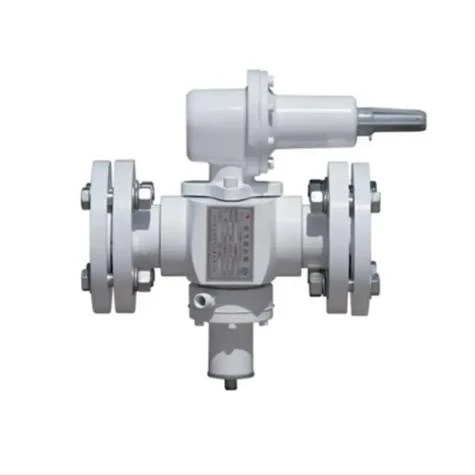
Dec . 04, 2024 09:23
Back to list
Understanding High Pressure Regulators and Their Applications in Various Industries
Understanding High Pressure Regulators Functions and Applications
High-pressure regulators play a crucial role in various industries, ensuring the safe and efficient handling of gases and fluids. These devices are designed to control and stabilize the pressure of gases, allowing them to be utilized effectively in a wide range of applications, from industrial processes to medical equipment. In this article, we will explore the functions, types, and practical applications of high-pressure regulators.
What are High-Pressure Regulators?
High-pressure regulators are mechanical devices that reduce the pressure of gas or fluid from a high-pressure source to a lower, usable pressure. The main purpose of a regulator is to maintain a consistent outlet pressure despite fluctuations in the inlet pressure or changes in flow rates. This critical function ensures that equipment downstream operates safely and efficiently.
Functions of High-Pressure Regulators
1. Pressure Reduction The primary function of a high-pressure regulator is to reduce the pressure of gas or fluid to a predetermined level. This is essential because working with high pressures can be dangerous and may damage equipment.
2. Flow Regulation Regulators help maintain a steady flow rate. By adjusting the outlet pressure in response to changes in demand, they allow for smooth operation of processes that rely on variable gas or fluid flow.
3. Safety Mechanisms Many high-pressure regulators are equipped with safety features such as relief valves. These relieve excess pressure, preventing potential hazards, such as equipment failure or explosion.
4. Precision Control High-pressure regulators provide precise control over outlet pressure, which is essential for operations requiring specific conditions, like welding, chemical manufacturing, or laboratory experiments.
Types of High-Pressure Regulators
High-pressure regulators can be categorized based on their design and application
1. Single-Stage Regulators These are ideal for applications where inlet pressure changes are minimal. They consist of a single pressure-reducing mechanism and are simple and cost-effective.
high pressure regulators

2. Two-Stage Regulators Designed for applications with fluctuating inlet pressures, these regulators provide more stable downstream pressure. They use two separate reducing chambers, which helps maintain pressure consistency despite variations in supply pressure.
3. Dome-Loaded Regulators These use a dome filled with gas to assist in controlling the outlet pressure. They offer high sensitivity and are ideal for precise applications, such as laboratory use.
4. Relief Valves Often integrated with high-pressure regulators, relief valves allow excess pressure to escape, ensuring that the system remains within safe limits.
Applications of High-Pressure Regulators
High-pressure regulators are widely used across various industries, including
1. Industrial Applications In manufacturing processes such as metal fabrication and chemical production, high-pressure regulators control the flow of gases like oxygen, nitrogen, and acetylene.
2. Medical Equipment Regulators are essential in medical applications, ensuring that gases like oxygen are delivered at safe and consistent pressures for patients.
3. Welding and Cutting In welding and cutting operations, high-pressure regulators provide the necessary gas flow for processes such as MIG and TIG welding, improving efficiency and safety.
4. Instrumentation In laboratories and research facilities, high-pressure regulators are vital for experiments requiring precise control over gas pressures.
Conclusion
High-pressure regulators are instrumental in various fields, ensuring safety, efficiency, and precision in gas and fluid handling. Their ability to reduce and regulate pressure makes them indispensable in industrial, medical, and laboratory environments. As technology advances, the design and functionality of high-pressure regulators will continue to evolve, further enhancing their role in modern applications. Understanding how these devices work and where they can be applied will enable professionals to select the right type for their specific needs, thereby optimizing operations and ensuring safety standards are met. Whether in the complex world of industry or the critical realm of healthcare, high-pressure regulators remain a key component of effective system management.
Latest news
-
Safety Valve Spring-Loaded Design Overpressure ProtectionNewsJul.25,2025
-
Precision Voltage Regulator AC5 Accuracy Grade PerformanceNewsJul.25,2025
-
Natural Gas Pressure Regulating Skid Industrial Pipeline ApplicationsNewsJul.25,2025
-
Natural Gas Filter Stainless Steel Mesh Element DesignNewsJul.25,2025
-
Gas Pressure Regulator Valve Direct-Acting Spring-Loaded DesignNewsJul.25,2025
-
Decompression Equipment Multi-Stage Heat Exchange System DesignNewsJul.25,2025

